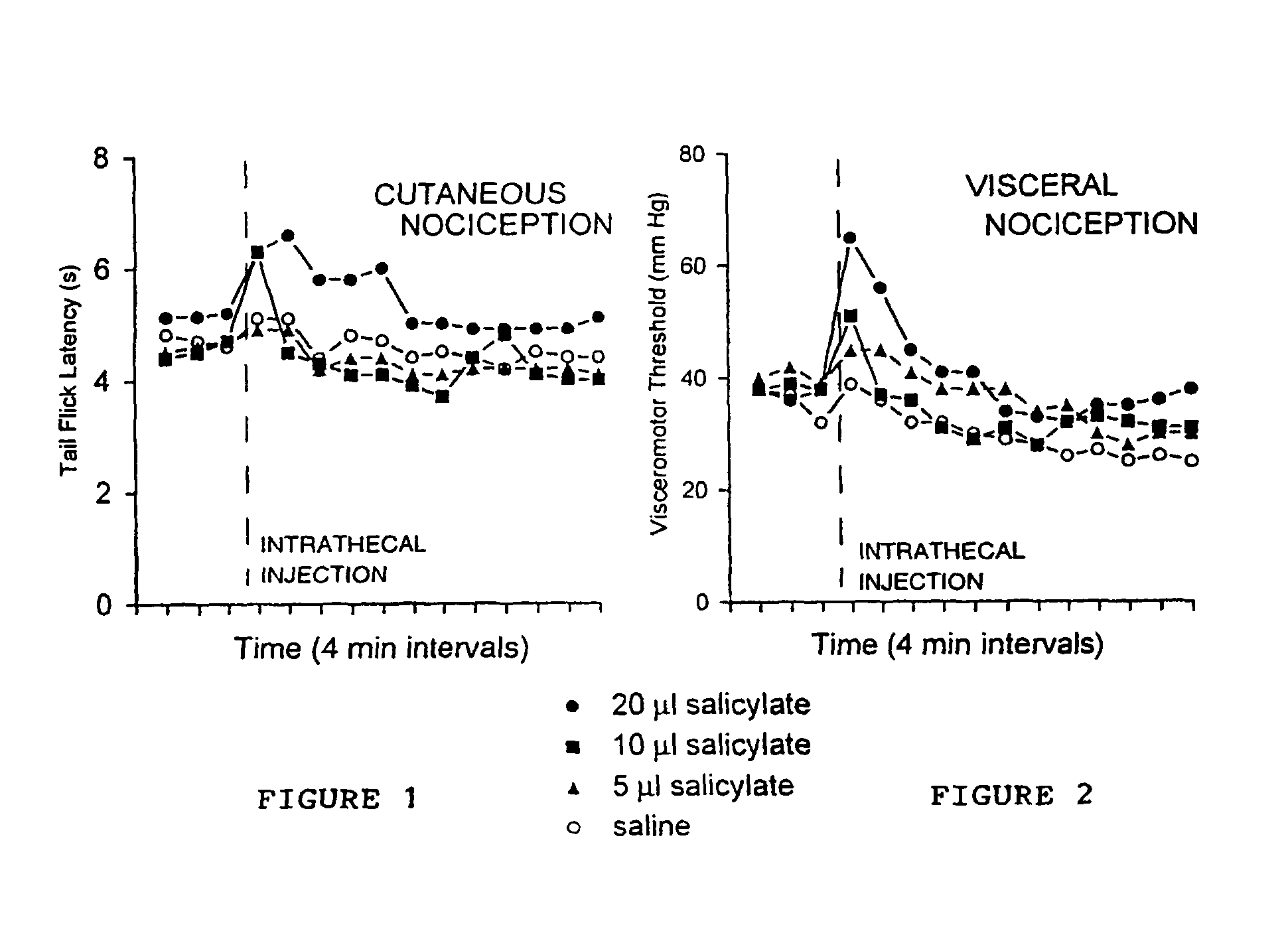Method of treating traumatic brain and spinal cord injuries and other neurogenic conditions using non-steroidal anti-inflammatory drugs and naturally occurring conotoxins
- Summary
- Abstract
- Description
- Claims
- Application Information
AI Technical Summary
Benefits of technology
Problems solved by technology
Method used
Image
Examples
Embodiment Construction
[0024]The present invention provides a method for treating neuronal injuries, diseases, conditions, disorders, pain including neurogenic pain, neuronal injury caused by inflammatory conditions, or neurotrauma often associated with traumatic brain injury (TBI) and / or spinal cord trauma (SCT), including diffuse axonal injuries manifested in conditions such as dystonia / spasticity, spastic disorders, convulsive disorders, or epilepsy by intrathecally and / or intraventricularly administering directly into the cerebrospinal fluid (CSF) of a patient or subject having or suspected of having or developing diffuse axonal injuries a therapeutically effective amount of a non-steroidal anti-inflammatory drug and / or a naturally occurring omega conotoxin, functional fragment thereof, pharmacologically acceptable salts, esters, amides, and prodrugs thereof.
[0025]The terms “patient” and “subject” mean all animals including humans. Examples of patients or subjects include humans, cows, dogs, cats, goa...
PUM
 Login to View More
Login to View More Abstract
Description
Claims
Application Information
 Login to View More
Login to View More - R&D
- Intellectual Property
- Life Sciences
- Materials
- Tech Scout
- Unparalleled Data Quality
- Higher Quality Content
- 60% Fewer Hallucinations
Browse by: Latest US Patents, China's latest patents, Technical Efficacy Thesaurus, Application Domain, Technology Topic, Popular Technical Reports.
© 2025 PatSnap. All rights reserved.Legal|Privacy policy|Modern Slavery Act Transparency Statement|Sitemap|About US| Contact US: help@patsnap.com

